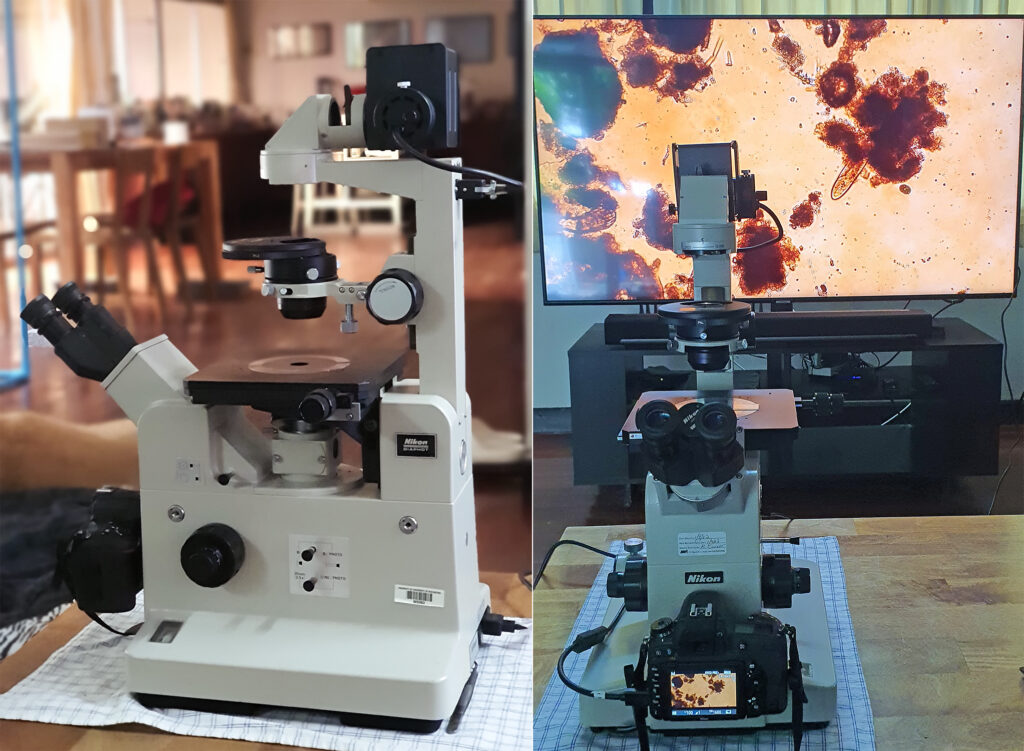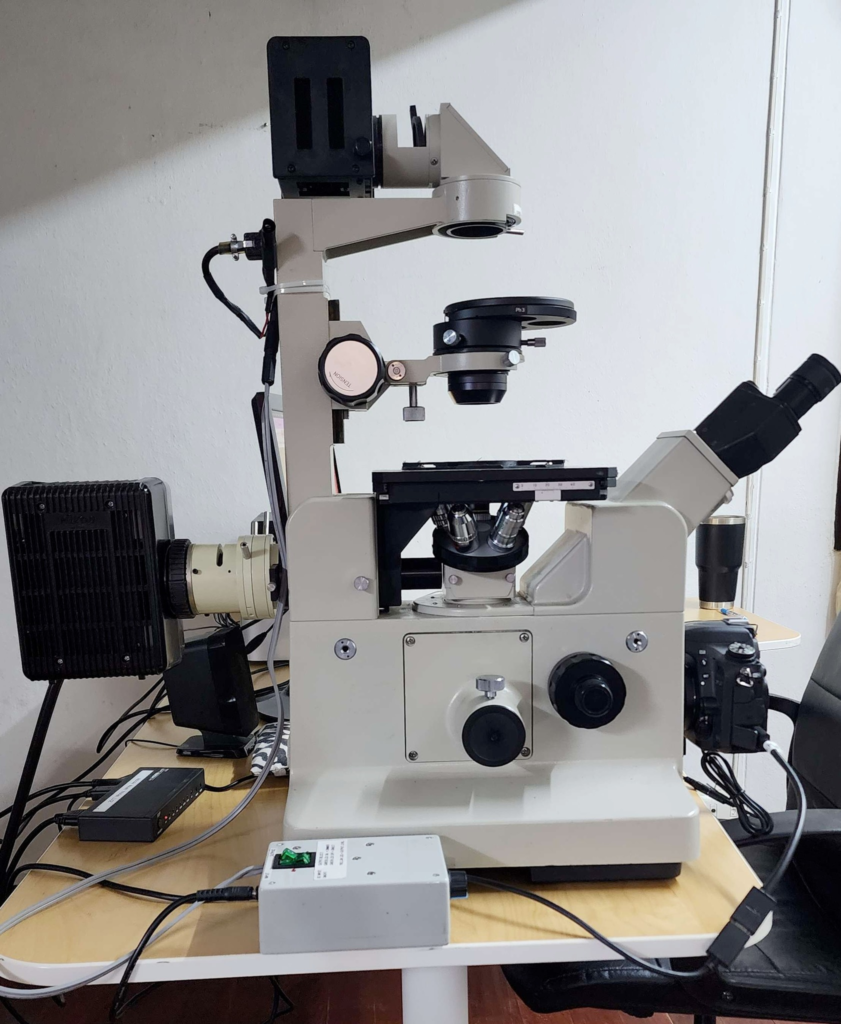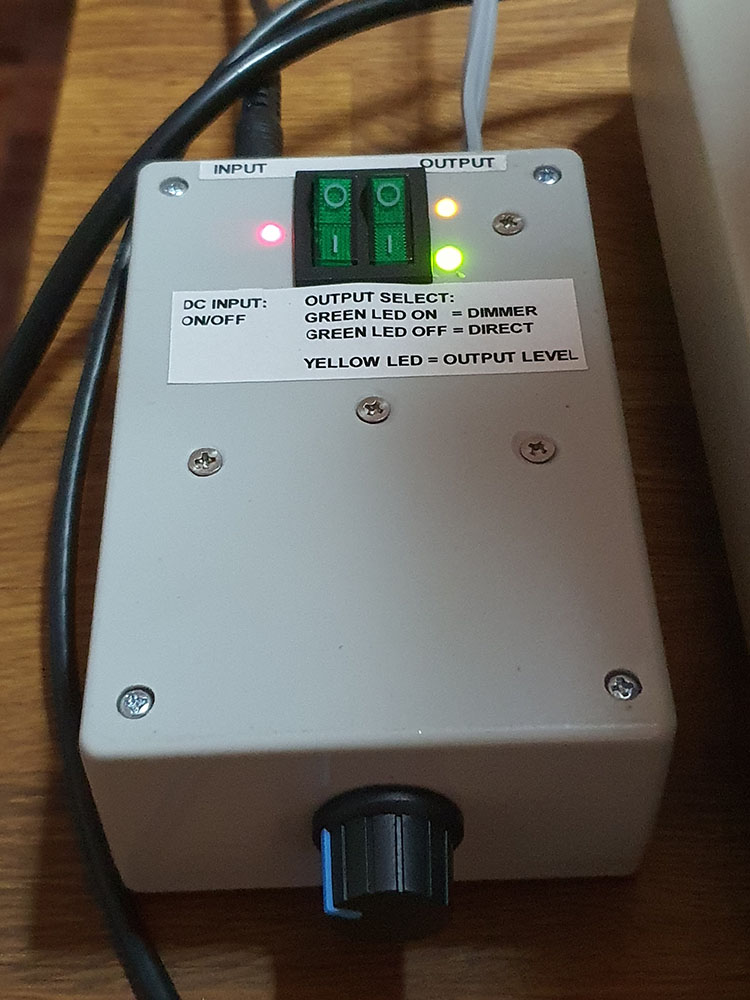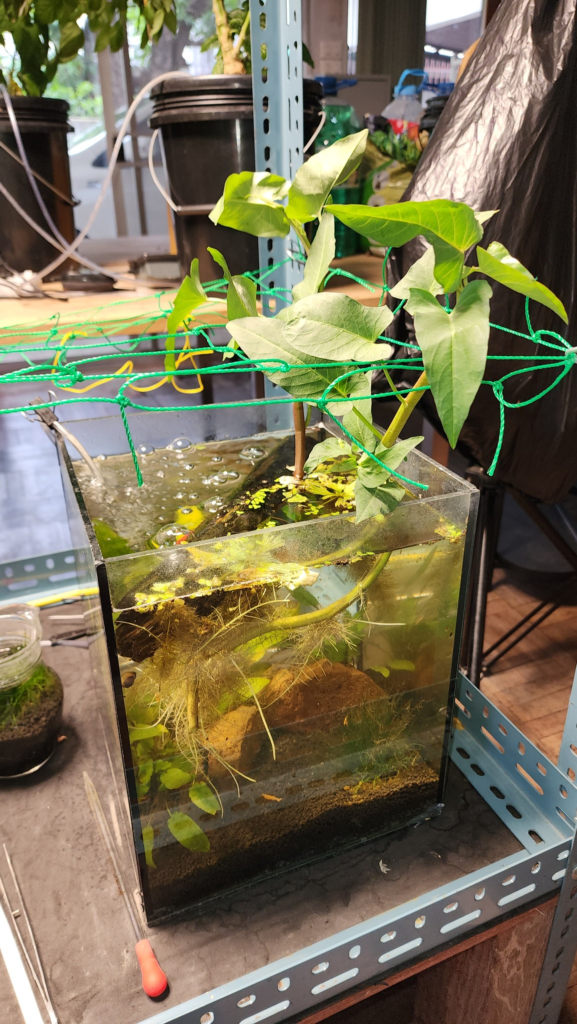About
Microscopy reflects a confluence of a number of my interests and hobbies. I have always held a strong interest in science, from astronomy and astrophotography to physics and biology. For more than 20 years I have married my passion for the night sky with my interests in photography and digital processing, and during that entire time I imagined turning my camera inward toward the microcosmos.
In 2022, during a visit home to the USA, I was gifted an amazing microscope – a Nikon Inverted Diaphot with Phase Contrast (circa 1985). Weighing more than 65 pounds, it was not a simple task bringing this scope with me from the USA to my home in Bangkok, but it made it in one piece. I have the following objectives:
- Nikon 10/0.25 Plan Phase Contrast
- Zeiss 16/0.40 NeoFluor PH2
- Nikon 20/0.75 Plan APO
- Nikon 40/0.65 Plan Phase Contrast
- Nikon 40/1.30 Fluor Oil Immersion
- Nikon 40/1.0 Plan APO Oil Immersion
- Nikon 100/1.30 Fluor Oil Immersion
The microscope is binocular, and also has dedicated camera and videocam ports. The Nikon F Lens mount allows my Nikon D750 DSLR to attach and reach focus without an adapter. HDMI out from the camera allows live views on our TV or a computer monitor. The camera records images at 24 megapixels, and video at 1080P.
In addition to Phase contrast, during my 2023 trip home I was given a complete Nikon Fluorescence System for the microscope.


Physical Modifications
The microscope’s internal AC power source powers a 50W halogen bulb. There is a dial that allows switching from 110V to 220V, but I didn’t want to trust it and risk frying the electronics, so instead I began by using a step down transformer. However, initial videos showed screen flicker unless the camera shutter speed was set to a multiple of 50 (AC power in Thailand is 50hz), and this became quite limiting when I wanted slower shutter speeds to allow more light. With the help of a friend, I modified the scope to bypass the internal power source and instead use an external 12V 6A DC laptop-style DC power brick. We included rheostatic control using a 13 Mhz PWM, and the result was that I could shoot at any shutter speed flicker-free.

Next, my wife’s cousin designed and 3D printed a replacement center disk for the stage, with a groove and magnetic top to hold slides in place. This is critical for use with the oil immersion objective. When using an inverted microscope the slide is placed with the coverslip facing down. The objective is brought into place from underneath, but once an oil immersion lens contacts the coverslip any additional pressure merely pushes the slide up off the stage surface, preventing the spring-loaded objective tip from focusing deeper into the slide. The magnetic top solves this issue, applying counter pressure to the slide and allowing the oil immersion objective to focus further into the sample.
In November 2023 I switched to a 100W halogen light source, running it off a more powerful transformer. The additional light allows video capture at much lower ISO, greatly reducing digital noise.
I’ve given all optical surfaces (both the microscope and camera) that I can reach a thorough cleaning. I’ve also become confident enough to open up the scope, remove the prisms and clean them. This elimated stubborn dust spots that I lived with for almost a year.
Future enhancements include plans to develop an improved stage, one that will have joystick control to allow smoother movement (especially diagonally) while following living organisms, as well as location memory to mark items of interest that can easily be returned to at the click of a mouse.
Advancing the Hobby
In early 2023 I started a 20L pondwater microorganism aquarium to provide a constant stream of organisms to view. I periodically refresh the aquarium with more water and plants from the original source (a fishing pond 30 minutes away). In November, 2023 I began playing around with microscopic crystal formation using various chemicals around the house.

Public Education
Using cables and other equipment I already had, I am able to live stream the microscope on YouTube. In line with the many years of sidewalk astronomy and public education I participated in, I am currently having conversations with several Bangkok primary and secondary schools to offer complimentary “online field trips” to science classes, offering views they might never get using equipment in the classroom (if they even have access to microscopes and live samples).


